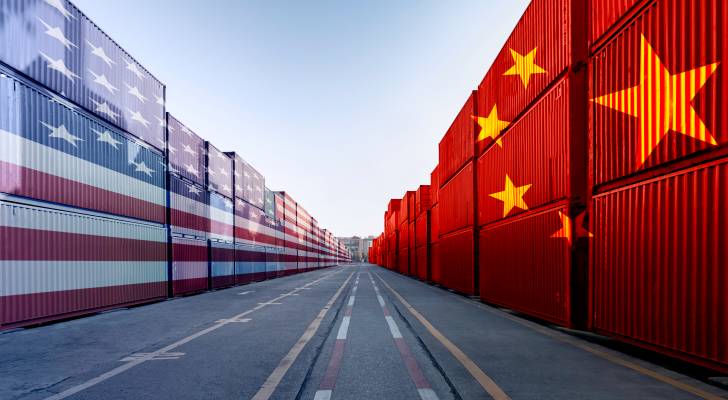
Three weeks into 2025 and the global economy stands at a precarious crossroads. Unpredictable US policy, escalating trade wars, combined with fears of a looming recession and the relentless pace of technological change mean that many corporate CEOs are in for a year of anxiety and uncertainty.
Insights from The Conference Board’s latest survey of over 1,700 executives — including more than 500 CEOs — paint a sobering picture of uncertainty and urgency, as corporate leaders prepare to navigate what many believe could be a make-or-break year for global markets.
Recession fears: A looming shadow that just won’t lift
While some corporate leaders are breathing a bit easier early into 2025, most are still anxiously awaiting how trade policy and government policy will impact global economic conditions.
As of January 2025, global recessionary fears eased slightly — down to 46% from 53% in 2024. This slightly rosier picture doesn’t mean CEOs can breathe easier. For nearly half of CEOs, the specter of a downturn continues to haunt their decision-making.
This lingering dread is especially acute in regions like Europe and North America, where economic turbulence has already taken its toll.
In Japan, however, a different challenge looms: labour shortages, which an overwhelming 66% of executives cite as their greatest concern.
These stark regional disparities highlight the fragility of an interconnected global economy teetering on the edge.
Trade wars: An escalating global threat
Adding fuel to the fire are intensifying trade tensions between global powers. For CEOs in the US, EU, and Asia, these disputes rank as the most pressing geopolitical risk of 2025.
Nearly 50% of business leaders in Asia and Europe anticipate severe operational disruptions as a result of these conflicts, while 34% of US-based executives share similar fears. As tariffs and protectionist policies spread like wildfire, CEOs are bracing for the fallout, grappling with questions of survival in an increasingly fragmented trading landscape.
Trump’s tariffs wreaking havoc worldwide
Turns out the economic battlefield of 2025 is marred by the lingering effects of protectionist policies — policies that were first set in motion with, then, President-elect Donald Trump promising a return to “Trump tariffs." Initially these tariffs were meant to pressure China while protecting American industries; however, the aggressive nature means escalating trade wars are now a defining feature of global trade dynamics. These tariffs, along with retaliatory measures from China and the EU, have created a ripple effect of heightened costs and fractured supply chains that continue to haunt businesses worldwide.
Supply chains under siege
Years of disruptions — from pandemics to political instability — have left supply chains battered and exposed. CEOs are now racing to fortify their operations, with 71% of US and 77% of European executives planning major overhauls within the next five years.
Diversifying vendors, leveraging artificial intelligence (AI), and integrating cutting-edge technologies have become not just priorities but necessities. These shifts, however, come with a heavy price tag, forcing businesses to balance resilience with profitability in an era of unrelenting uncertainty.
AI: A double-edged sword
As artificial intelligence (AI) promises to reshape industries, it also ignites unease among business leaders. While 44% of CEOs acknowledge AI’s potential to revolutionize productivity, nearly half struggle with the expertise needed to implement these technologies effectively. The gap between aspiration and capability is stark, with many executives admitting they are not yet prepared to harness AI’s full potential. As such, it’s not the potential resistance from workers that leaders fear, but the mounting pressure to acquire specialized talent that can leverage the benefits for AI. The year ahead highlights the grueling race to stay ahead — or risk falling behind.
Climate change: An unstoppable force
The climate crisis is no longer a distant threat but a present reality, disrupting businesses and reshaping corporate priorities.
Extreme weather events now rank among the top ESG concerns for 34% of CEOs globally. Regional differences further complicate the response: US leaders focus on building climate resilience, while European and Japanese CEOs set their sights on achieving carbon neutrality.
These diverging strategies reflect the mounting challenge of aligning environmental commitments with financial imperatives in a world already feeling the impact of a warming planet.
Innovation over price hikes
Faced with economic and geopolitical pressures, CEOs are shifting their growth strategies away from price hikes and toward innovation.
Only 13% plan to raise prices in 2025, with the majority instead prioritizing investments in new products, technologies, and data-driven marketing.
In Europe alone, 57% of CEOs intend to increase their marketing tech budgets by at least 10%, underscoring the belief that creativity and adaptability — not cost-cutting — will drive profits in the years ahead.
2025: A Year of Reckoning
For CEOs, 2025 is shaping up to be a year fraught with challenges that demand courage, clarity, and calculated risks. From bracing for economic shocks to navigating the complexities of global trade and technological transformation, leaders must balance their fears with bold actions. The path forward is neither simple nor certain, but one thing is clear: those who can adapt to the storms of change will be the ones to shape the future.
This article Global economy on the edge: CEOs brace for trade wars and no price hikes in 2025
This article provides information only and should not be construed as advice. It is provided without warranty of any kind.